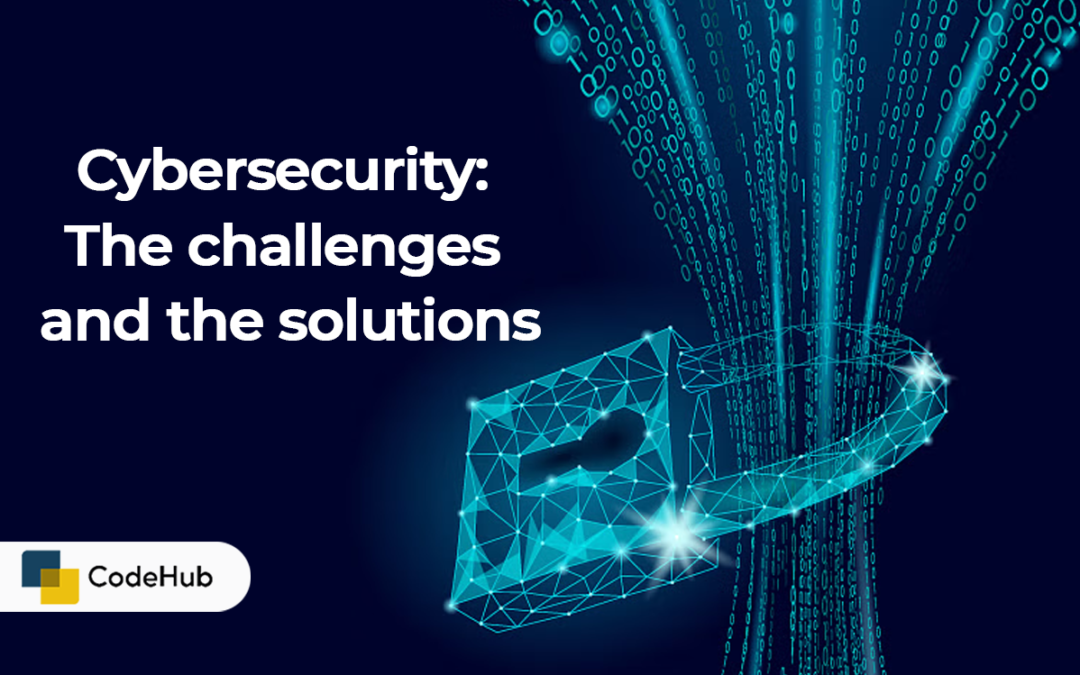Cybersecurity is the practice of protecting networks, systems, devices, and data from unauthorized access, manipulation, or damage. Cybersecurity is essential for ensuring the privacy, integrity, and availability of information in the digital world. However, cybersecurity also faces many challenges and threats, such as hackers, malware, phishing, ransomware, denial-of-service attacks, and more. In this blog, we will explore some of the common cybersecurity threats and the solutions that can help mitigate them.
Hackers
Hackers are individuals or groups who use their skills and tools to break into networks, systems, devices, or data, for various purposes, such as stealing, spying, sabotaging, or extorting. Hackers can exploit vulnerabilities, such as weak passwords, outdated software, or misconfigured settings, to gain unauthorized access or control. Hackers can also use social engineering techniques, such as impersonating, deceiving, or persuading, to trick users into revealing their credentials, clicking on malicious links, or downloading infected files.
Some of the solutions that can help prevent or stop hackers are:
- Using strong and unique passwords for each account and device, and changing them regularly.
- Using multi-factor authentication, such as a code, a fingerprint, or a face scan, to verify the identity of the user.
- Updating the software and firmware of the networks, systems, devices, and applications, to fix any bugs or patches.
- Configuring the security settings of the networks, systems, devices, and applications, to limit the access and permissions of the users and the devices.
- Educating the users and the employees about the best practices and the policies of cybersecurity, and how to recognize and avoid phishing emails, malicious links, or suspicious attachments.
Malware
Malware is a term that refers to any software or code that is designed to harm or disrupt the networks, systems, devices, or data. Malware can include viruses, worms, trojans, spyware, adware, rootkits, keyloggers, and more. Malware can infect the networks, systems, devices, or data, by hiding in legitimate files, programs, or downloads, or by exploiting vulnerabilities, such as unpatched software, open ports, or unsecured networks. Malware can cause various damages, such as deleting, encrypting, or modifying data, stealing or leaking information, spying or monitoring activities, displaying unwanted ads or pop-ups, or slowing down or crashing the system.
Some of the solutions that can help prevent or remove malware are:
- Using antivirus or anti-malware software, and scanning the networks, systems, devices, and data regularly, to detect and delete any malicious software or code.
- Using firewall or network security software, and blocking or filtering any unauthorized or suspicious traffic, to prevent any malicious software or code from entering or leaving the network.
- Using backup or recovery software, and creating and storing copies of the networks, systems, devices, and data, to restore them in case of any data loss or corruption.
- Using encryption or data security software, and protecting the networks, systems, devices, and data with passwords, keys, or certificates, to prevent any unauthorized access or modification.
Phishing
Phishing is a technique that involves sending fraudulent emails, messages, or calls, that appear to be from legitimate sources, such as banks, companies, or authorities, to trick users into revealing their personal or financial information, such as usernames, passwords, credit card numbers, or bank account details. Phishing can also involve luring users into clicking on malicious links or attachments, that can redirect them to fake or compromised websites, or download malware or ransomware onto their systems or devices. Phishing can result in various consequences, such as identity theft, fraud, extortion, or blackmail.
Some of the solutions that can help prevent or avoid phishing are:
- Using spam or email security software, and filtering or deleting any unsolicited or suspicious emails, messages, or calls, to reduce the exposure to phishing attempts.
- Using web or browser security software, and verifying or blocking any untrusted or malicious websites, links, or attachments, to prevent any phishing attacks.
- Using common sense and caution, and checking the sender, the subject, the content, and the tone of the emails, messages, or calls, to spot any signs of phishing, such as spelling errors, grammatical mistakes, urgent requests, or unrealistic offers.
- Using verification and confirmation, and contacting the legitimate sources, such as banks, companies, or authorities, directly or through their official channels, to validate or report any suspicious or fraudulent emails, messages, or calls.

